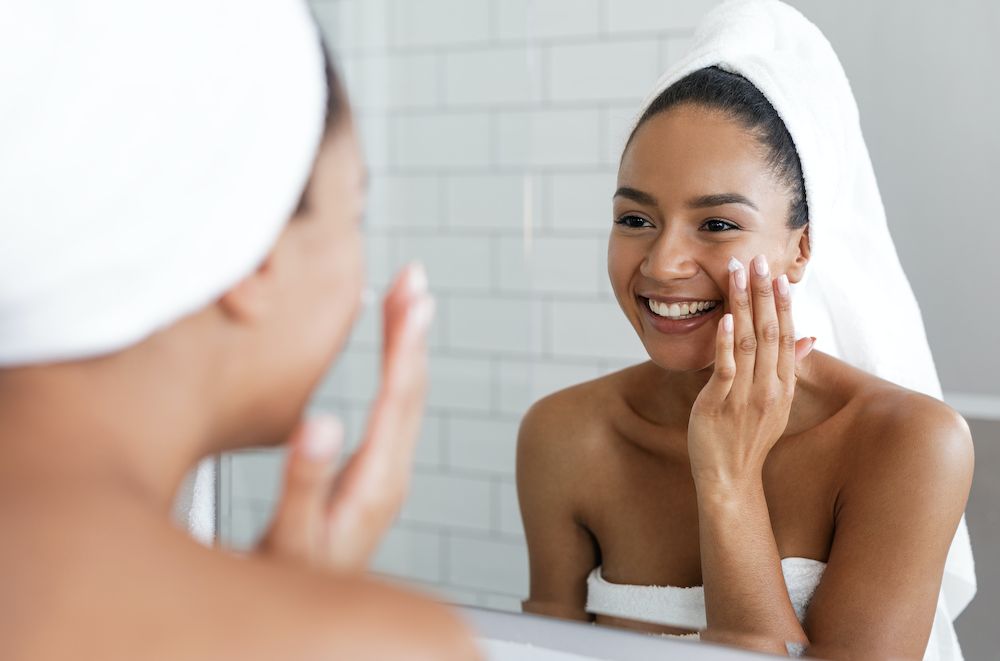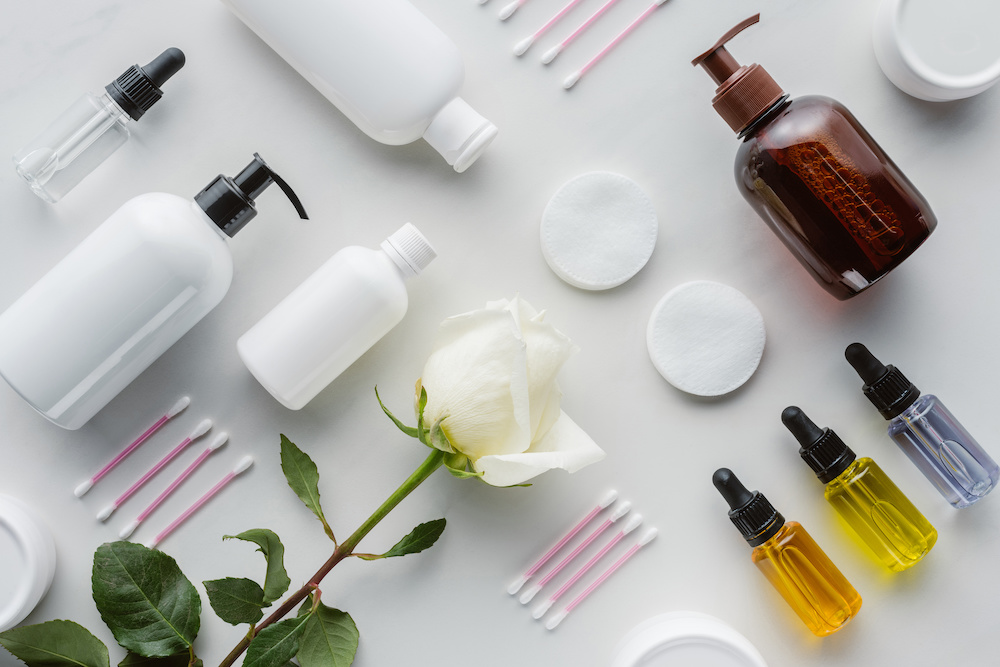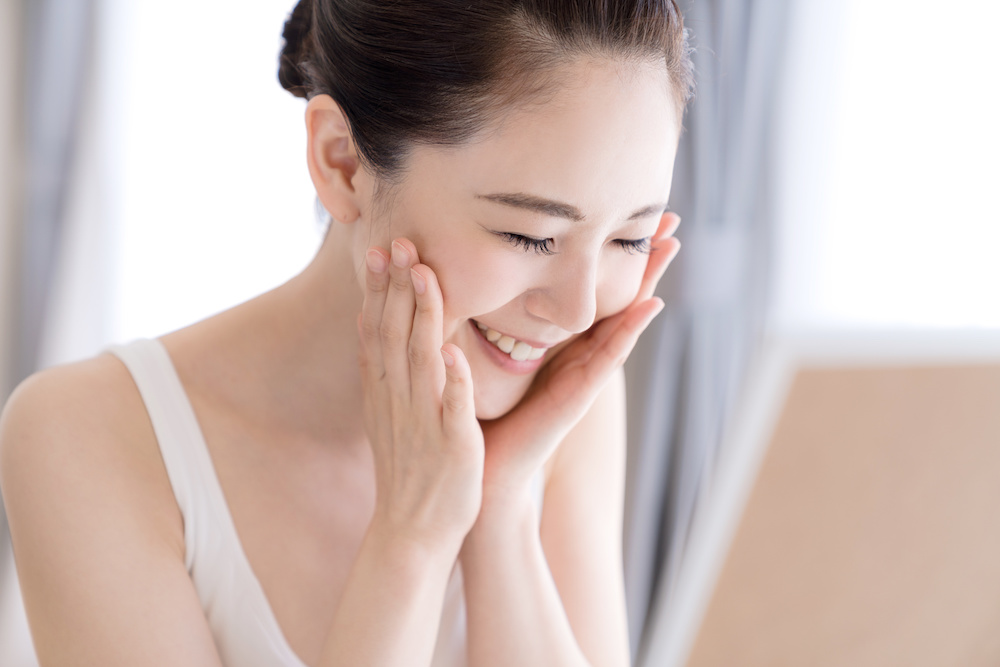 If you’re feeling overwhelmed by all the hype about 15-step Korean skin care regimens (what’s an essence, anyway?), you are not alone! While it can be intimidating, there’s actually a method to layering these beauty products to produce the most beneficial results.
If you’re feeling overwhelmed by all the hype about 15-step Korean skin care regimens (what’s an essence, anyway?), you are not alone! While it can be intimidating, there’s actually a method to layering these beauty products to produce the most beneficial results.
Rule #1. The lightest or thinnest texture should always be applied first. The order of application looks something like this: serum, toner, essence, eye cream, moisturizer, oil. You might not use all these products (or you might use more!), which is all fine. Following this general rule will allow each product to penetrate into your skin before moving onto the next.
Rule #2. Give each product a minute to absorb into your skin before moving on. As you progress into your layers, the longer your intervals should be.
Rule #3. The heavier the product, the longer you should wait between applications. This will prevent products from mingling together too much and creating any dreaded pills that roll off your skin. Find things you can do while waiting: brush your teeth, style your hair, make a cup of tea, get dressed, etc.
Keep scrolling to learn how to get the best results from your products by layering them in the correct order!
1. Double Cleanse
Yes, even cleansing is layered now! A good cleanse at night is crucial for preparing your face. Otherwise, you’re leaving a barrier of makeup, sunscreen, and environmental debris that will prevent proper absorption. A single cleanse in the morning is all you need.
For double cleansing, start with an oil-based cleanser, which is typically very rich and emollient. This will “melt” and lift any products, such as makeup, off your face. After rinsing, you’ll feel a film left on your face—follow up with a classic facial cleanser. Think of the first cleanse as removing, the second cleanse as cleaning.
2. Essences, Toners, Lotions, and Skin Softeners
With the diversity of Asian beauty products entering our market and also influencing Western brands, we’re seeing an explosion of products with differing names but all containing liquid-y contents that look similar. As your second step after cleansing, use a toner, which is designed to replace lost hydration, soften skin, and prepare your face to better absorb skincare that’s to follow. Toners have a very thin, watery texture and should disappear into your skin without leaving a trace.
Essences are your next step—these are sometimes called skin softeners or lotions if coming from Asia. They are thicker in texture than a toner but lighter than a serum. The reason they’re so popular (especially in Asia) is because Asians have a thinner moisture barrier, so this added step helps prevent dehydration. If you have oily skin, skip this step.

3. Serum
This is your powerhouse product. Everyone over 18 should be using some sort of serum, whether it’s an antioxidant, AHA/BHA, ceramides, Hyaluronic Acid, etc. The serum’s main purpose is to treat specific skin concerns like increasing moisture or minimizing pores. Also, serums are usually the most expensive part of your skincare routine—but they’re worth it. Definitely invest in a good serum if you need to prioritize your spending.
4. Eye Cream
A controversial opinion: an eye cream is not always necessary. If you’re happy with your regular moisturizer and are able to apply it close to the eye area, that’s just fine. But, if you have sensitive skin, yes—use an eye cream since they are formulated to be non-irritating. Or, if you find your daytime moisturizer too rich, causing your makeup to slide off or break up, use an eye cream that’s oil-free or has a thinner texture.
5. Moisturizer
Think of this as the layer that locks in all that good skincare you just infused into your face. Without this, most skin types will quickly dehydrate. Adjust the amount you use depending on your skin and seasonality—in the winter you’ll need more, in the summer less. Similarly, you might want a richer, heavier night cream and something lighter during the day.
6. Oils
As the most occlusive skincare product, add oils last. The exception to this is if you have a thin, astringent treatment oil, which should then go on after your serum and before your moisturizer. Again, defer to the “thin to thick” principle and you’ll be fine.

7. Retinols
Retinols are another powerhouse product and your single best anti-aging solution. They neutralize free radicals, accelerate skin turnover, reduce hyper-pigmentation, and overall diminish the look of fine lines and wrinkles. Apply this after cleansing on dry skin then follow up with a moisturizer. Because they’re so potent, start off using just once or twice a week and build up gradually, using a pea-size amount each time. Tip: retinols will make your skin photosensitive, so only use them at night and follow up with a broad-spectrum sunscreen during the day.
8. Spot Treatments
Technically, these should be used directly on freshly cleaned skin, but because it’s impossible to put on a spot treatment after cleansing and then work the rest of your skincare regimen around the spot(s), it’s more efficient to simply take a damped cotton bud and gently remove skincare products over the specific spots.
Blemishes might feel like they’re massive, but the “head” is actually quite small and that’s where you should be concentrating the spot treatment. Use a clean cotton bud or even a fine makeup brush to apply pinpoint spot treatment only on the affected areas. If you spread the treatment to the surrounding area you’ll cause perfectly healthy skin to dry up and flake off, increasing redness and prolonging healing. Use spot treatments at night as they will make you photosensitive; and during the day it’s imperative you cover those spots with a broad spectrum sunscreen to prevent darkening or scarring.
9. Sunscreen
Think of sunscreen as insurance. You won’t notice the effects everyday but in the long-term, you’ll be so glad you had it. Don’t rely on the SPF in your makeup—in fact, ignore it. There is absolutely no way you would ever use enough product to achieve the SPF level claimed. Invest in the best broad-spectrum sunscreen that works for you. And if, like most people, your eyes are sensitive to sunscreen, find one that’s specifically formulated for the eye area.
A lot of modern sunscreens are sweat-proof and water-resistant, making them tough to remove. Many people who claim sunscreens cause breakouts should consider the possibility that they’re simply not removing the product thoroughly each night. Oil cleansing is imperative here, which brings us full circle.

